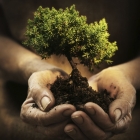-
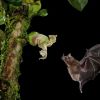 +27 +5
+27 +5Some tropical flowers reflect sound so nectar-seeking bats can find them more easily
Nature’s inventiveness knows no bounds. Consider the case of the nectar-drinking bat and the night-flowering vine whose lives intertwine in the lowland tropical forests of Central America.
-
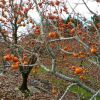 +24 +5
+24 +5Growing food: Where your food comes from
We eat different fruits and vegetables every dag. We buy these foods mostly in the supermarket, where they are cleaned and very pretty to look at. What we don’t see is the growing process of these plants. This photo’s show the grow process of the food we eat daily and gives a great view on that. A very informative and mostly fun set of photos!
-
 +18 +5
+18 +5The World's First Bionic Plant
Like a flood of needles, an onslaught of carbon nanotubes seeps in through a plant's leaves' and beelines toward each cells' chloroplasts—the hub where sunlight transforms into chemical energy. These nanotubes, thin straws of latticework atoms, pierce the energetic chloroplasts and imbed themselves like a thousand splinters. But rather than irritating or damaging the cell, the foreign particles are giving the plant a hardware upgrade.
-
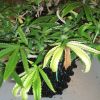 +2 +1
+2 +17-Step Guide to Fix 99% of Cannabis Gardening Problems
Follow 7 steps to diagnose, fix & prevent the most common cannabis growing problems (for indoor and outdoor growers): Step 1: Maintain Correct Temperature & Humidity, Step 2: Provide Enough Light, Step 3: Fix Nutrient Problems (and root pH), Step 4: Add Breeze & Air Circulation, Step 5: Maintain Healthy Roots, Step 6: Prevent Bugs & Mold, Step 7: Still Not Sure? View the Picture Guide to Dozens of Common Cannabis Plant Problems
-
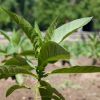 +15 +5
+15 +5West Nile virus may have met its match: tobacco
Some people think of tobacco as a drug, whereas others think of it as a therapy — or both. But for the most part, it's hard to find people who think of the tobacco plant in terms of its medical applications. Qiang Chen, an infectious disease researcher at Arizona State University, is one such person. His team of scientists conducted an experiment, that demonstrates how a drug produced in tobacco plants can be used to prevent death in mice infected with a lethal dose of West Nile virus.
-
 +28 +10
+28 +10Cherry Blossom Grown from Space Seeds a Bit Weird
A cosmic mystery is uniting monks and scientists in Japan after a cherry tree grown from a seed that orbited the Earth for eight months bloomed years earlier than expected -- and with very surprising flowers.
-
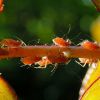 +22 +6
+22 +6Spying on plant communication with tiny bugs
Internal communications in plants share striking similarities with those in animals, new research reveals. With the help of tiny insects, scientists were able to tap into this communication system. Their results reveal the importance of these communications in enabling plants to protect themselves from attack by insect pests.
-
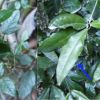 +15 +7
+15 +7The Most Versatile Impressionist In the Forest
Ernesto Gianoli wasn’t the first person to work out his frustrations with a walk in the woods, but the motivation behind that walk—and its results—were certainly unusual.
-
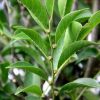 +14 +4
+14 +4New species of metal-eating plant discovered in the Philippines
Scientists have discovered a new plant species with an unusual lifestyle - it eats nickel for a living - accumulating up to 18,000 ppm of the metal in its leaves without itself being poisoned, says the lead author of a new report. Such an amount is a hundred to a thousand times higher than in most other plants.
-
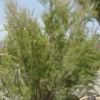 +17 +5
+17 +5Not all weeds are bad for environment
Some weeds can grow without invading native plants.
-
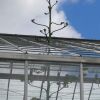 +15 +8
+15 +880-year-old wonder: U-M's agave plant on verge of blooms
Once-in-a-lifetime blooms on an 80-year-old American agave plant at the University of Michigan's Matthaei Botanical Gardens have yet to open, but anticipation for the big event has drawn huge crowds to the Ann Arbor gardens.
-
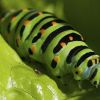 +30 +6
+30 +6Scientific research has shown plants can hear themselves being eaten
VEGETARIANS, get off your moral high-horses. It turns out that plants can hear themselves being eaten.
-
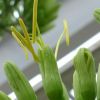 +20 +7
+20 +7A flowering process 80 years in the making is finally underway
An American agave plant housed at the University of Michigan since 1934 started to bloom Tuesday afternoon. The blooms so far are "low-key" with yellow anthers sticking out, Joe Mooney, a spokesman for Matthaei Botanical Gardens, said Wednesday. The anther is the part of the stamen where pollen is produced.
-
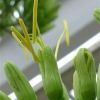 +1 +1
+1 +1Agave that will bloom only once begins to do so
A flowering process 80 years in the making is finally underway. An American agave plant housed at the University of Michigan since 1934 started to bloom Tuesday afternoon. The blooms so far are "low-key" with yellow anthers sticking out, Joe Mooney, a spokesman for Matthaei Botanical Gardens, said Wednesday. The anther is the part of the stamen where pollen is produced.
-
 +22 +7
+22 +7Rising CO2 Increases the Size of Poison Ivy Plants
Better grab your calamine lotion. More CO2 means bigger poison ivy plants.
-
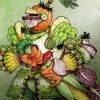 +25 +5
+25 +5Fruits and Vegetables Are Trying to Kill You
Antioxidant vitamins don’t stress us like plants do—and don’t have their beneficial effect.
-
 +17 +3
+17 +3Plants have unexpected response to climate change
Not all species flee rising temperatures. As the mercury has inched upward across western North America over the last 40 years, many plant species have moved downhill, toward—not away from—warmer climates, according to the results of a new study. The finding adds to growing evidence that temperature isn’t the only factor influencing how Earth’s life will respond to climate change.
-
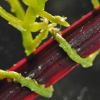 +32 +10
+32 +10New Plant Language Discovered
People tend to be fixated upon the question of whether talking to your plants stimulates them to grow, but scientists have known for several decades that various plant species talk among themselves — not with words, but by releasing chemical signals into the air that warn other trees about impending insect attacks. Most of the nearly 50 studies on the subject have found evidence of plant communication.
-
 +19 +2
+19 +2Plants in offices increase happiness and productivity
Offices devoid of pictures, souvenirs or any other distractions are "the most toxic space" you can put a human into, say psychologists in a paper published on Monday, which says workers perform better when household plants are added to workplaces.
-
 +4 +2
+4 +2Macro world of flowers and micro ferns
Submit a link
Start a discussion
















